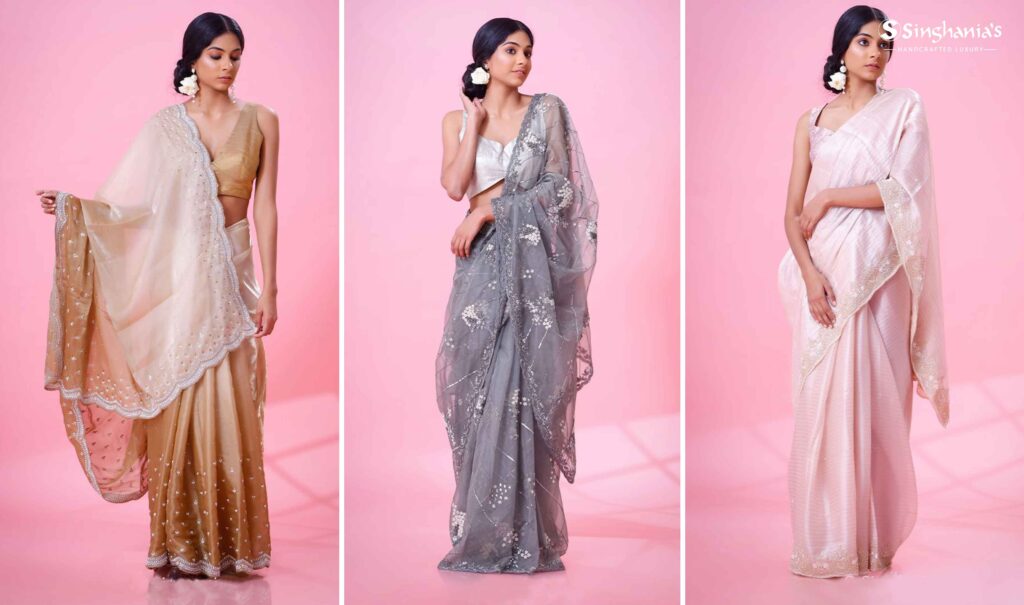How to Wear a Saree: A Comprehensive Guide
The saree is a timeless piece of clothing that embodies grace, elegance, and tradition. Worn by women across India and in many other countries, the saree consists of a long piece of fabric, typically ranging from 5 to 9 yards, that is draped around the body. This article will provide a detailed, step-by-step guide on how to wear a saree, along with tips, variations, and a FAQ section to help you navigate this beautiful attire.
Understanding the Saree
A saree is not just a garment; it is a cultural symbol that represents the heritage and traditions of India. The way a saree is draped can vary significantly between different regions, communities, and occasions. The saree is often paired with a blouse (choli) and a petticoat, which adds structure to the drape.
Key Components of a Saree
- Saree: The main fabric, which can be made from various materials such as silk, cotton, chiffon, and georgette.
- Blouse: A fitted top that complements the saree, usually tailored to fit the wearer.
- Petticoat: A long skirt worn under the saree to provide support and shape.
- Safety Pins: Used to secure the saree in place.
- Accessories: Jewelry and footwear that enhance the overall look.
Step-by-Step Guide to Wearing a Saree
Wearing a saree can seem daunting, especially for beginners. However, with practice and the right technique, it can be a straightforward process. Here’s a step-by-step guide to help you wear a saree confidently.
Step 1: Gather Your Materials
Before you start, ensure you have all the necessary items:
- A saree (5 to 9 yards)
- A matching blouse
- A petticoat (preferably in a color that matches or complements the saree)
- Safety pins
- Accessories (jewelry, footwear)
Step 2: Put on the Blouse and Petticoat
- Wear the Blouse: Put on your blouse and ensure it fits well. The blouse should end just below the bust.
- Wear the Petticoat: Tie the petticoat around your waist, making sure it fits snugly. The length should be adjusted so that it sits just above your ankles.
Step 3: Drape the Saree
- Start with the Plain End: Hold the saree with the plain end (the end without the decorative border) and tuck it into the petticoat at your right side, just above the navel.
- Wrap Around: Wrap the saree around your waist from right to left, bringing it back to the front.
- Tuck the Saree: Tuck the saree into the petticoat as you go, ensuring it is secure and the fabric is smooth.
Step 4: Create Pleats
- Make Pleats: With the remaining fabric, create pleats of about 5 to 8 inches wide. Use your thumb and forefinger to fold the fabric neatly.
- Tuck the Pleats: Tuck the pleats into the petticoat on the left side, ensuring they are even and straight.
Step 5: Drape the Pallu
- Bring the Pallu Over: Take the remaining length of the saree (the pallu) and bring it over your left shoulder. The pallu can be left open or pleated, depending on your preference.
- Adjust the Length: Ensure the pallu reaches the back of your knee or is adjusted to your liking.
- Secure with a Safety Pin: Use a safety pin to secure the pallu to your shoulder, preventing it from slipping.
Step 6: Final Adjustments
- Check the Fit: Make any necessary adjustments to ensure the saree is comfortable and looks good.
- Accessorize: Add jewelry and other accessories to complete your look.
Tips for Wearing a Saree
- Choose the Right Fabric: Depending on the occasion, choose a fabric that suits the event. Lighter fabrics like chiffon are great for casual wear, while silk is ideal for formal events.
- Practice: If you are new to wearing sarees, practice draping in front of a mirror to get comfortable with the process.
- Footwear: Wear comfortable footwear, especially if you plan to be in the saree for an extended period.
- Iron the Saree: Ensure the saree is wrinkle-free before wearing it. Ironing helps in achieving smooth pleats.
Variations in Saree Draping
Different regions of India have unique styles of draping sarees. Here are a few popular styles:
| Style | Description |
|---|---|
| Nivi Style | The most common style, originating from Andhra Pradesh, where the saree is draped around the waist with pleats in the front. |
| Bengali Style | In this style, the saree is draped with the pallu thrown over the right shoulder, creating a distinct look. |
| Maharashtrian Style | A nine-yard saree is draped without a petticoat, creating a traditional and elegant appearance. |
| Gujarati Style | In this style, the saree is draped in a way that allows for a more playful and colorful look, often with the pallu at the front. |
| Lehenga Style | The saree is draped like a lehenga, giving a modern twist to the traditional attire. |
Cultural Significance of the Saree
The saree is more than just a piece of clothing; it is a symbol of Indian culture and tradition. It has been worn for centuries and continues to be a preferred choice for many women, reflecting their personal style and heritage. The saree is often associated with various rituals and ceremonies, making it an integral part of Indian life.
Frequently Asked Questions (FAQ)
Q1: How long is a typical saree?A1: A typical saree ranges from 5 to 9 yards in length, with a width of about 1 meter.
Q2: Can I wear a saree without a petticoat?A2: While it is possible to wear a saree without a petticoat, it is not recommended as the petticoat provides support and structure to the drape.
Q3: What type of blouse should I wear with a saree?A3: The blouse should complement the saree and fit well. It can be sleeveless, half-sleeved, or full-sleeved, depending on your preference.
Q4: How do I keep the saree in place?A4: Use safety pins to secure the pleats and pallu in place, preventing them from slipping.
Q5: Is it difficult to wear a saree?A5: With practice, wearing a saree becomes easier. Following a step-by-step guide can help simplify the process.
Conclusion
Wearing a saree is an art that combines tradition, elegance, and personal style. With the right technique and practice, anyone can drape a saree beautifully. This timeless attire continues to be a favorite among women, symbolizing grace and cultural heritage. Whether for a festive occasion or a casual outing, mastering the art of wearing a saree can enhance your wardrobe and confidence.For more information about sarees and their cultural significance, you can refer to Wikipedia.



